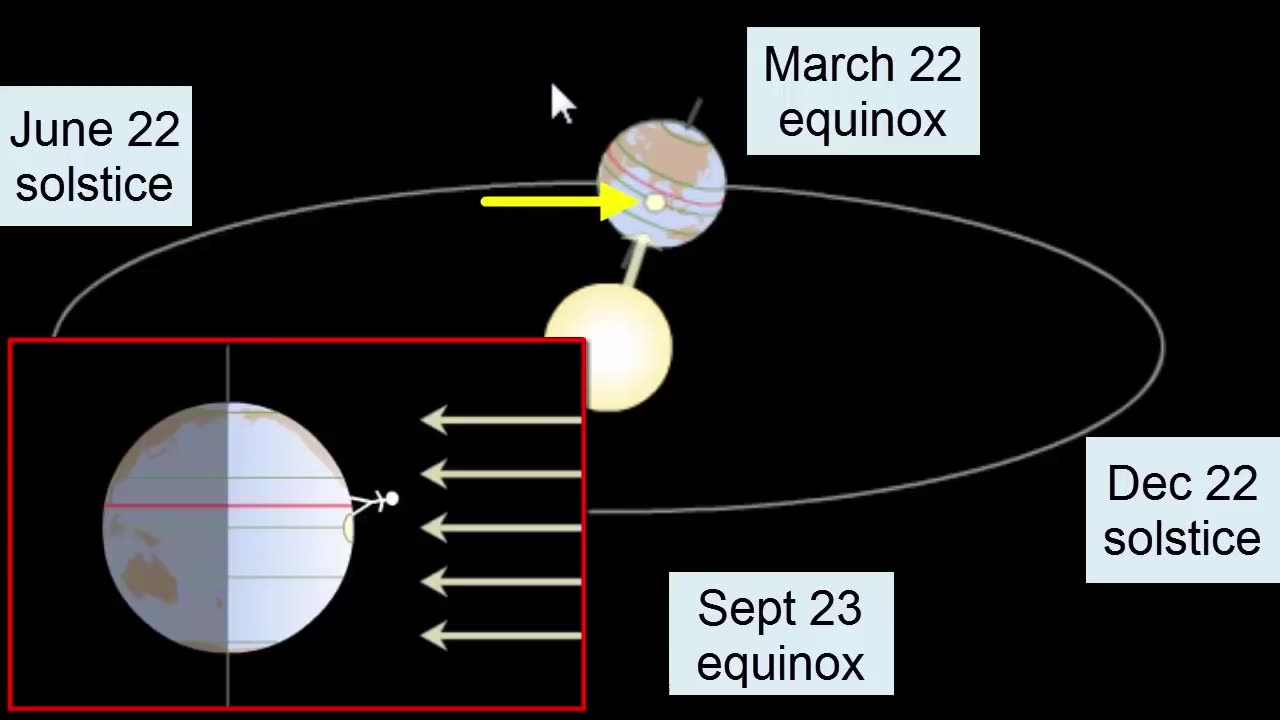Premium Only Content

Review of the causes of the seasons in the northern and southern hemispheres and impacts of Earth's seasons on daily light cycles and heat input. Includes descriptions of solstices and equinoxes. Designed for an introductory oceanography course at City College of San Francisco.
**This video comes in the middle of the semester, so there may be terms with which the audience is unfamiliar. For a full playlist, refer to the Oceanography playlist on the Earth Rocks! YouTube Channel.
Air-Sea Interactions Series:
Part I: Seasons
Part II: Relative Humidity
Part III: Atmospheric Gases, Heats, and Pressures
Part IV: Atmospheric Circulation
Part V: Weather Phenomena
If you are an earth science enthusiast and would like to support our ongoing video development and engage with us behind the scenes...
Or if you are a student and would like access to interactive lessons built around these videos...
you can do so by JOINING the Earth Rocks! YouTube Channel:
/ @earthrocks .
Thank you!
Additional notes:
The images in this video are not drawn to scale, because to do so, we couldn't see the Earth and Sun in the same image. The Sun is actually 109 times greater in width (diameter) than the Earth. That means that when they were drawn next to each other, the Earth would be 1/109th the height of the Sun. We wouldn't see it on the screen.
The distance between the Earth and the Sun is actually about 23,400 times the Earth's diameter. That means that when drawn next to each other as shown in the top image of the video, the Earth would actually appear smaller than a pin hole (you'd need to line up 23,400 of them next to each other to reach the Sun).
Earth rotates around its own axis once every 23 hours and 56 minutes. It takes another 4 minutes more rotation to face the Sun again. So when we talk about a day = 24 hours, we are really saying the time it takes to return us to facing the Sun. (Technically called a "solar day.") Multiply 4 minutes per day by 1/2 a year and you get about 12 hours. By the time we get to the other side of Earth's orbit, we are about 12 hours rotated from where we were on the other side. The result is that noon always ends up with us almost directly under the Sun depending on where you live in a time zone. We don't notice this 12-hour rotation unless we look at the stars in the sky (the "fixed objects" against which we can see our motion). That's why we see different constellations at night depending on the time of the year.
-
 UPCOMING
UPCOMING
FreshandFit
7 hours agoLas Vegas Takeover!
18.7K7 -
 LIVE
LIVE
Badlands Media
7 hours agoDevolution Power Hour Ep. 404
6,999 watching -
 LIVE
LIVE
Drew Hernandez
21 hours agoGOP COOKED INTO DENIAL & 12 ISRAELI-LINKED PHONES DETECTED AT UVU DAY OF CK EXECUTION?
1,078 watching -
 2:46:08
2:46:08
TimcastIRL
3 hours agoFAA To STOP Flights Over Shutdown, May CLOSE Airspace, Thanksgiving Travel APOCALYPSE | Timcast IRL
161K79 -
 1:56:20
1:56:20
Tucker Carlson
3 hours agoIt’s Time to Decide: America First or Lindsey Graham’s Psychosexual Death Cult?
42.3K224 -
 LIVE
LIVE
SpartakusLIVE
6 hours agoBattlefield 6 - REDSEC || ARC Raiders Later? || Anybody Want Warzone???
602 watching -
 LIVE
LIVE
Alex Zedra
2 hours agoLIVE! Spooky Games tn
228 watching -
 LIVE
LIVE
I_Came_With_Fire_Podcast
13 hours agoThe Normalization of Political Violence | Right Wing In-Fighting | China Chooses China
218 watching -
 LIVE
LIVE
PandaSub2000
8 hours agoLIVE 10:30pm ET | BUZZ TRIVIA with Chat!
155 watching -
 1:13:58
1:13:58
ThisIsDeLaCruz
1 hour agoWhat Fans Never Hear: Pearl Jam’s Audio Engineer Tells His Story
11K